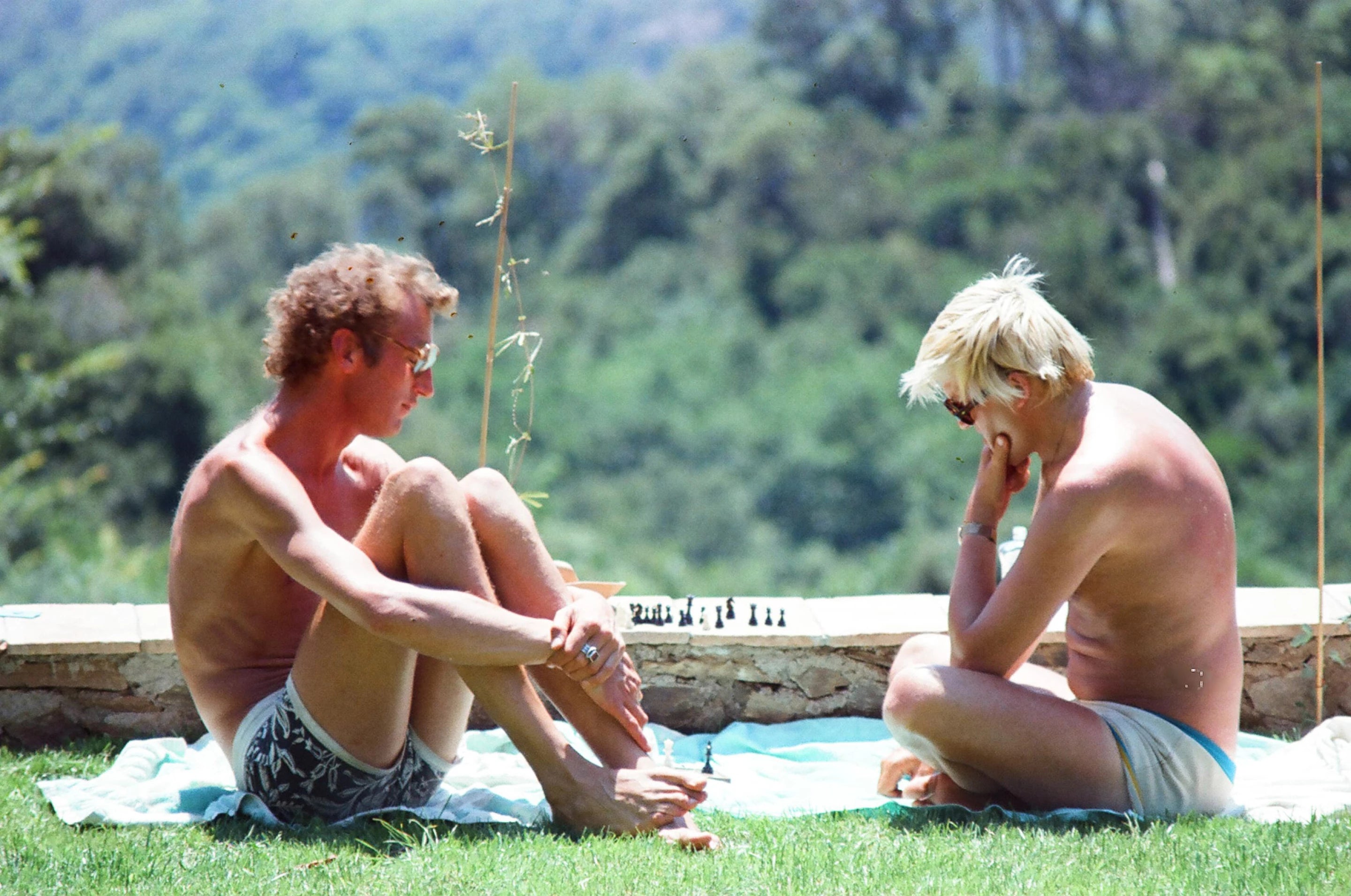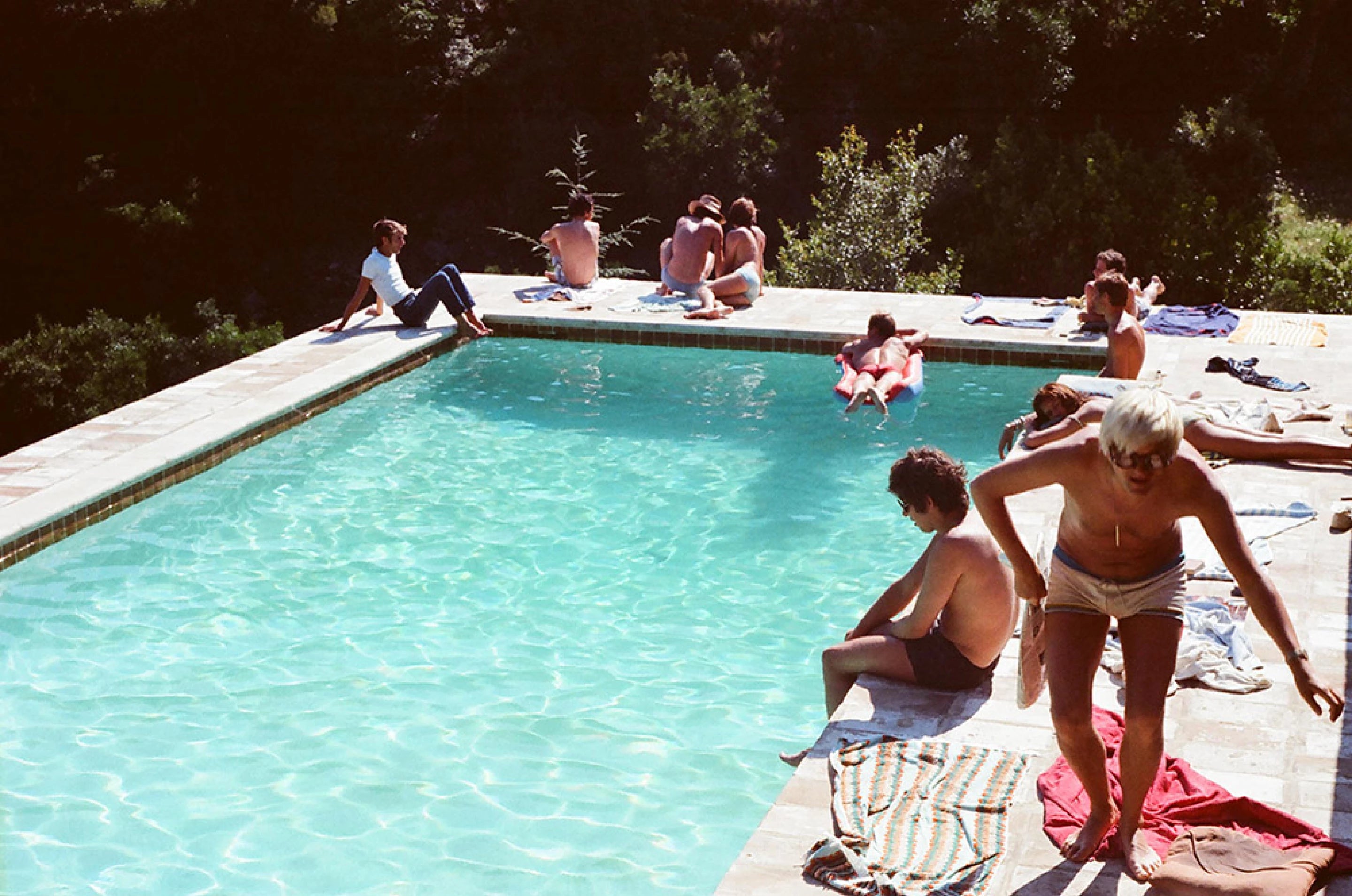David Hockney would make Saint Tropez, with its wild energy and spectacular landscapes, a source of inspiration for some of his greatest works. Joined by his partner Peter Schlesinger, they both stayed at director Tony Richardson's villa, named "The Duke's Nest." The man whom Hockney met in 1966, when he was designing the sets for the film "Ubu Roi," enjoyed bringing together in his home a group of creatives of the time, witnesses and actors of endless parties by night and by day under the blazing sun by the pool. Among them were actress Jeanne Moreau and photographer Henri Cartier-Bresson. Hockney immortalized these moments in rare photographs.
Indian summer at the duke's nest



The swimming pool is undoubtedly the most famous motif in Hockney's work. While this fascination was born during a trip between England and Los Angeles, where he spent some time and discovered a landscape littered with azure blue spots before landing, the Tropezian swimming pool in The Duke's Nest holds a crucial place in the birth of one of his masterpieces.
“Portrait of an Artist,” in a setting directly inspired by the view that soars from the corner of the pool at the Duke's Nest, reveals a contemplative and observant, even detached, energy when our eyes rest on the subject standing at the edge of the pool. The azure blue of the water, with its surface remarkably interpreted by Hockney, offers a striking contrast to the densely green background. It is a perfect blend of his exceptional mastery of color and his expression of the contemplative calm that characterizes his world.


A few kilometers away and a few years earlier, his work “Early Morning, Saint Maxime” depicts his vision of the gentle landscapes of the Gulf of Saint Tropez. About which he confided; “I took a photo of the scene and I was so impressed that I painted it like that... It is the only painting where I did not try to dominate the scene.”


